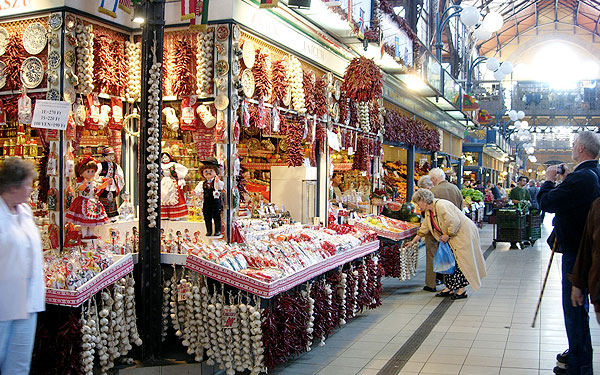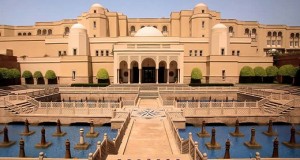Review Overview
3
Summary : Agra is a positive mecca of handicraft shops and emporia, selling a wide rang goods from marble curios, brassware and embroidery to ivory, wood carvings, saris and ready-made garments, and carpets and jewellery
Agra is a positive mecca of handicraft shops and emporia, selling a wide rang goods from marble curios, brassware and embroidery to ivory, wood carvings, saris and ready-made garments, and carpets and jewellery. Every taxi and auto-rickshaw driver will try to punctuate an afternoon’s tour of monuments with one or more visits to an emporium. The best general shopping area is Sadar Bazaar, below the tourist office, where you can pick up good marble, leather and clothes bargains. Before buying anything, however, get a list of approved shops from the Government of India tourist office.
Agra has a particularly fine handicrafts pedigree. When Humayun returned here from his exile in Persia, he brought with him a retinue of captive artisans and weavers. His son Akbar gave these craftsmen, painters, jewellers a royal Commision. At this point, Agra became the handicrafts centre of north India, and the country’s very first carpets came into being. Inevitably, these were of Persian design. There are many carpet wholesalers in Agra today, the two main ones being Cottage Industries Exposition, 39 Fatehabad Rd, and Manglick & Sons, 5 Taj Rd. CIE is located in an old haunted castle, and its motto is ‘if you buy a carpet here, you’re sure to fly Trouble is, their carpets are Kashmiri (unlike Manglick, which has the authentic Agra produce) and the only thing likely to fly is your credit card. Try Harish Carpet Co ., in Vibhav Nagar Rd (tel 75594) , who have a wide range.
For the time being, this h the best-deal carpet wholesaler in town—a standard 5 x 7 ft example (pure Agra wool choice of Persian or Punjabi designs, 280 double-knots per sq in). Beautiful wool dhurries, in the same size, are very reasonably priced at Rs650. Guarantees are supplied with all purchases, and shipping home is no problem. Other famous Agra products are marble pietra Jura and papier mache. There are several factories dotted around town where you can watch these items being made, with no obligation (just a lot of pressure) to buy.
Agra Marble Agra is especially famous for its high-quality marblework, the presence of the Taj having encouraged the local people to develop a real expertise in it. There area presently hundreds of factories in Agra working on marble, most of them in the Balu Ganj area, just up from the Mall. Every one of the workers seems to have had an ancestor who worked on the Taj Mahal itself.
Though shopping for marble is best done at a fair-price shop like Subhasl Emporium (in Gwalior Rd, opposite the Central Telegraph Office), it’s worth visitin a place like Marble Art Palace (159 Garden Road, Balu Ganj) to see the complex marble-inlay process. So neatly do the little mosaic pieces of semi-precious stones fit into the marble surrounds, that you can’t help wondering how the stone has been sod perfectly incised. Well, it hasn’t. Instead, the marble has been given a coating of henna, on which the major axes of the design are carefully scratched out, Ong the stone below exposed as white lines. Only when an exact, symmetrical design has been achieved is it drawn onto the marble. Then the semi-precious stones are cut to the exact shape of the pattern, using judgement of eye alone (templates are used nowhere in the process), and are glued together on a sheet of molten plastic. The resulting jigsaw mosaic of precious stones is then settled into recesses etched into the marble, and polished off with emery until the whole surface is uniformly h. The hard, durable, non-staining marble used comes not from Agra, but from ilia, south-west of Jaipur. The process of working it (as described) has remained more or less unchanged since the days of th Tab.
Particularity fine marble gifts are the beautiful mosaic plates, inlaid with semi-pre- , cious stones, which sell at places like the emporium boulevard leading into the Taj itself. Expensive perhaps, but much better than the inferior soapstone rubbish (posing as marble) sold at less reputable places. An easy way of telling marble from scapstone (alabaster), by the way, is to scratch the item being sold against a piece of wood. Soapstone marks, marble doesn’t.
No last points about shopping in Agra. Be careful when paying for anything by credit card and always keep copies of the bill and voucher copy-shop-owners are Avery skilled at adding a couple of zeros to the price shown on receipts. Second, don’t go Into any shop with touts or rickshaw men. They get up to 30% commission on any purcases you make.





